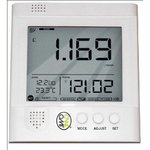Owl + USB Connectivity CM160 Energy Saving Wireless Power Electricity Smart Monitor
Hills antenna's are the rep for Australia and charge a massive RRP - AUD 199.00 as seen in the link below
http://www.hillsantenna.com.au/HillsAntenna/Products/Product…
Can get it through amazon.co.uk for $88.7677 AUD.
It's pretty easy to install and pays itself off very quickly in smaller power bills (if you take notice of the monitor).
OWL+USB Wireless Electricity Monitor is the latest, complete wireless electricity monitoring solution.
OWL is proud to announce our next generation wireless electricity monitor which keeps all the existing energy saving features of the original OWL monitor with a brand new ‘track and store’ feature. Monitor your electricity usage, produce live and historical charts via your PC at a time to suit you via the supplied USB cable and software supplied.

 CamelCamelCamel
CamelCamelCamel Keepa
Keepa
do u connect it to the main switch? what does it involve? Also does it show $ as i see it uses pounds